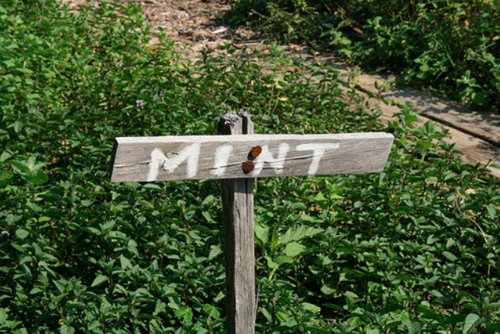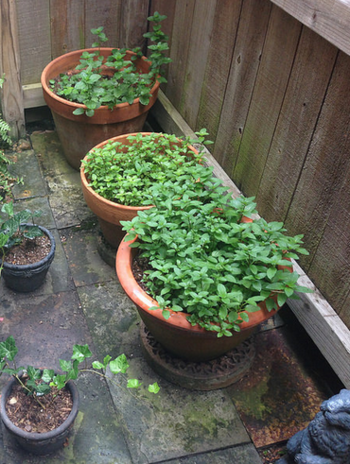
Invasive herbs refers to herbs that have a tendency to take over your garden or growing space. Although such herbs are usually grown for their herbal benefit (culinary, medicinal, appearance, etc.), the ability of such herbs to take over the garden can be a real problem and might even put the herb gardener off growing them again. These herbs need to be managed to prevent their spread, meaning that they can still be enjoyed as part of a garden without taking it over. And you might be surprised that the tenacious invasive herb survives when other plants keel over in the heat or cold extremes, so sometimes it is a blessing to have a little something still growing in the garden when all else fails!
Spotting a potentially invasive herb
Some invasive herb examples:
- Artemesia (loves poor soil and puts neighbouring plants off growing near it)
- Borage
- Comfrey (reseeds readily)
- Costmary
- Catnip
- Fennel (a real pest on the farm and beyond)
- Horseradish
- Lemon balm (reseeds readily)
- Mint family (creeping rhizomes)
- St. John's wort
- Tarragon
- Tansy
- Woodruff
- Yarrow
- Yellow archangel
Note that not all of these herbs will turn rampant; if the conditions aren't suitable, they may seem under control. Watch out though, as the conditions proving optimal can quickly change the herb into a rampant spreader.
Check to see if any particular herbs are banned or controlled in your part of the world. What may be a tame and harmless herb in one country may be an out-of-control pest in another.
Managing the invaders

For herbs that spread by sprawling roots, the best thing you can do is curtail their spreading ability. Planting them in containers is a really good approach, and you have the ability to move then around the garden. Another is to place a barrier around the plant well down into the soil, forcing it to spread its roots against the barrier and not across the soil. One such barrier is a container––simply plant the whole container into the garden soil and have the plant at ground level without the container showing. Other barriers can be a bucket with the base cut out, a circle of strong plastic sheeting (poke water holes into it though), a terracotta or ceramic pipe, or any other non-toxic and strong tube-like item you can salvage from somewhere.
Mint does really well growing in half barrels and looks really nice too.
For herbs that spread by seed, keep such herbs well pruned and picked regularly to keep them neat and under control. Don't allow the flowers to go to seed. If this seems too hard to keep up with, then these plants are best grown indoors where you can tend to them on the kitchen windowsill and the seeds won't be a problem; or don't grow them at all.
Dividing contained herbs
After a few years, for a contained herb, you'll need to lift the herb for dividing and planting elsewhere, as the containment will cause it to stop thriving after a time. Once divided, plant the divided portions into a similar arrangement to prevent further spread. Maybe donate some to the local school fair but be kind enough to add a note about keeping the herb contained!
Some container ideas
You don't have to stick to the traditional terracotta or plastic planter. You can choose all sorts of fun things to keep herbs in, from Wellington boots to saddlebags, from baskets to dog food sacks. Be creative in your choices and you'll be rewarded with an interesting herb garden that has aesthetic appeal as well as utility and good control.
See also
- Herb container gardens at https://extension.usu.edu/files/publications/publication/HG-524.pdf